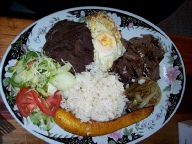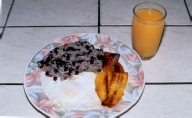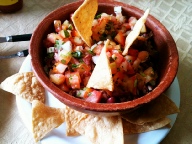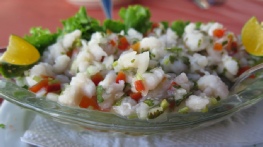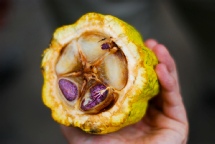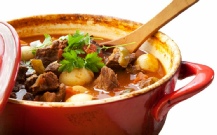Costa Rican cuisine is known for being fairly mild, with high reliance on fresh fruits
and vegetables. Rice and black beans are a staple of most traditional Costa Rican
meals, often served three times a day. Costa Rican fare is nutritionally well rounded,
and nearly always cooked from scratch from fresh ingredients. Traditional meals have
a home-cooked, comforting feel to them. Due to the tropical location of the country,
there are many exotic fruits and vegetables readily available and included in the
local cuisine.
Due to the contrast of Costa Rica's large tourist economy with the many rural communities
throughout the country, the foods available, especially in the more urban areas,
have come to include nearly every type of cuisine in addition to traditional Costa
Rican dishes. Cities such as San José, Costa Rica, the capital, and beach destinations
frequented by tourists offer a range of ethnic foods, from Peruvian to Japanese.
Chinese and Italian food is especially popular with Ticos (the local name for anything
Costa Rican), and can be found around the country, though with varying levels of
quality. Food is an important aspect of Costa Rican culture, and family gatherings
and celebrations are often centered around meals.
The indigenous people of Costa Rica, including the Chorotega, consumed corn as a
large part of their diet during the pre-Columbian era. Although modern Costa Rican
cuisine is very much influenced by the Spanish conquest of the country, corn still
maintains a role in many dishes. Tamales, originally introduced to all of Central
America by the Aztecs, are served at nearly all celebratory events in Costa Rica
and especially at Christmas. They are made out of dough of cornmeal, lard, and spices,
stuffed with various mixtures of meat, rice, and vegetables and wrapped and steamed
in a plantain or banana leaf. The Chorotega native people prefer to stuff their tamales
with deer or turkey meat, pumpkin seeds, tomatoes, and sweet peppers .
The Caribbean coast of Costa Rica comes with its own host of Afro-Caribbean influenced
traditions. During the holidays, it is common to find pork cracklings and a tripe
soup called mondongo. Rice and beans is a common dish on the Caribbean side, not
to be confused with gallo pinto and other dishes containing rice and beans; this
dish consists of rice and beans cooked in coconut milk and typically served with
fish and some type of fried plantain.
The plantain, a larger member of the banana family, is another commonly used fruit
and can be served in a variety of ways. Ripe plantains (maduro) have a sweet flavor
and can be fried in oil, baked in a honey or a sugar-based sauce, or put in soups.
Green (unripe) plantains can be boiled in soups or can be sliced, fried, smashed
and then refried to make patacones. These are often served with a bean dip or guacamole.




